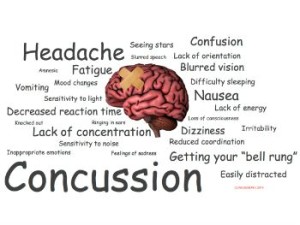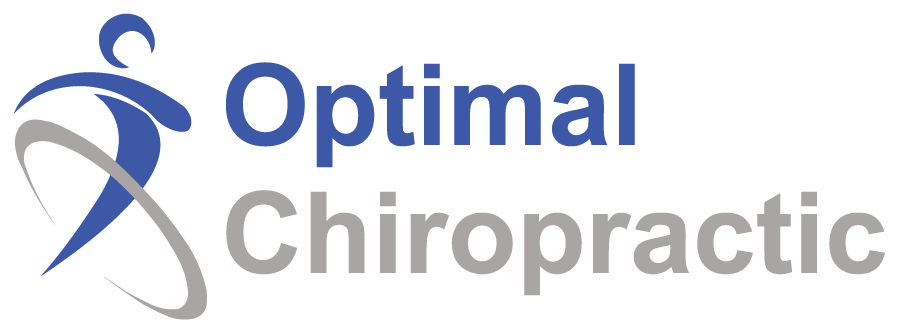With football season getting ready to start all across the country, parents and coaches should be reminded about concussions. It is estimated that 1.6-3.8 million sports related concussions happen each year. A concussion can caused even from a very minor head trauma, and overlooked if you’re not looking for the proper signs and symptoms. Research today has shown that concussions have the potential to cause lifelong problems for athletes if not treated properly and precautions taken. So what exactly is a concussion? A concussion is the result of a force sustained by the head or neck. They are injuries usually seen in contact sports such as football or soccer, but can occur as a result from many events such as a fall or car accident. A concussion does not always result in loss of consciousness, therefore, they can often be difficult to recognize both from an athlete and coach or trainers perspective.Common symptoms associated with a concussion include: headaches, short term memory loss, seeing “stars”, nausea, vertigo (dizziness), balance problems, sensitivity to light and sound, and sleep disturbances. Standard neuroimaging such as an X-ray or MRI will usually come back negative, which makes concussion primarily a clinical diagnosis.There are many ways to prevent long term problems associated with concussion. The first involves education for the athletes, coaches or trainers, and also parents. Many athletes do not report concussions because they are unaware of the signs and symptoms associated with them. Studies have shown that educating players on these signs will help to increase athlete reporting to their coaches.When a concussion is suspected, athletes should be removed from play immediately. If left in a game, an athlete can sustain further damage to their brain, as it is in a very vulnerable state at this time. If left to continue playing, a second impact may occur which may cause further permanent damage.When an injury to the head or neck occurs during a game, a sideline assessment called a SCAT2 will be used to assess the athlete as soon as they come off the field. With any significant head trauma, concussion should be suspected, and the athlete held out of the activity for proper assessment of their condition. If at any time symptoms worsen, then the athlete should be sent to the emergency room for further evaluation. If the players' symptoms stay the same or improve, the athlete should go home and be monitored closely for the next 48 hrs.Once a physician has cleared the athlete, and all symptoms are gone, they can gradually begin to participate in the sport again. SCI’s return to play protocol recommends 5 days, but it is at the discretion of the physician in more cases. Oftentimes it is recommended that until an athlete is completely symptom free, they do not have any level of participation.As the fall sports season rolls around, it is always a very exciting time of year. The doctors at Optimal Chiropractic want to encourage athletes and parents to educate themselves on this topic further in order to prevent unnecessary injury to young athletes. Our office offers sports physicals to any athlete participating in school sports throughout the year. If your child needs their sports physical, give our office a call to schedule your appointment TODAY!
So what exactly is a concussion? A concussion is the result of a force sustained by the head or neck. They are injuries usually seen in contact sports such as football or soccer, but can occur as a result from many events such as a fall or car accident. A concussion does not always result in loss of consciousness, therefore, they can often be difficult to recognize both from an athlete and coach or trainers perspective.Common symptoms associated with a concussion include: headaches, short term memory loss, seeing “stars”, nausea, vertigo (dizziness), balance problems, sensitivity to light and sound, and sleep disturbances. Standard neuroimaging such as an X-ray or MRI will usually come back negative, which makes concussion primarily a clinical diagnosis.There are many ways to prevent long term problems associated with concussion. The first involves education for the athletes, coaches or trainers, and also parents. Many athletes do not report concussions because they are unaware of the signs and symptoms associated with them. Studies have shown that educating players on these signs will help to increase athlete reporting to their coaches.When a concussion is suspected, athletes should be removed from play immediately. If left in a game, an athlete can sustain further damage to their brain, as it is in a very vulnerable state at this time. If left to continue playing, a second impact may occur which may cause further permanent damage.When an injury to the head or neck occurs during a game, a sideline assessment called a SCAT2 will be used to assess the athlete as soon as they come off the field. With any significant head trauma, concussion should be suspected, and the athlete held out of the activity for proper assessment of their condition. If at any time symptoms worsen, then the athlete should be sent to the emergency room for further evaluation. If the players' symptoms stay the same or improve, the athlete should go home and be monitored closely for the next 48 hrs.Once a physician has cleared the athlete, and all symptoms are gone, they can gradually begin to participate in the sport again. SCI’s return to play protocol recommends 5 days, but it is at the discretion of the physician in more cases. Oftentimes it is recommended that until an athlete is completely symptom free, they do not have any level of participation.As the fall sports season rolls around, it is always a very exciting time of year. The doctors at Optimal Chiropractic want to encourage athletes and parents to educate themselves on this topic further in order to prevent unnecessary injury to young athletes. Our office offers sports physicals to any athlete participating in school sports throughout the year. If your child needs their sports physical, give our office a call to schedule your appointment TODAY!
